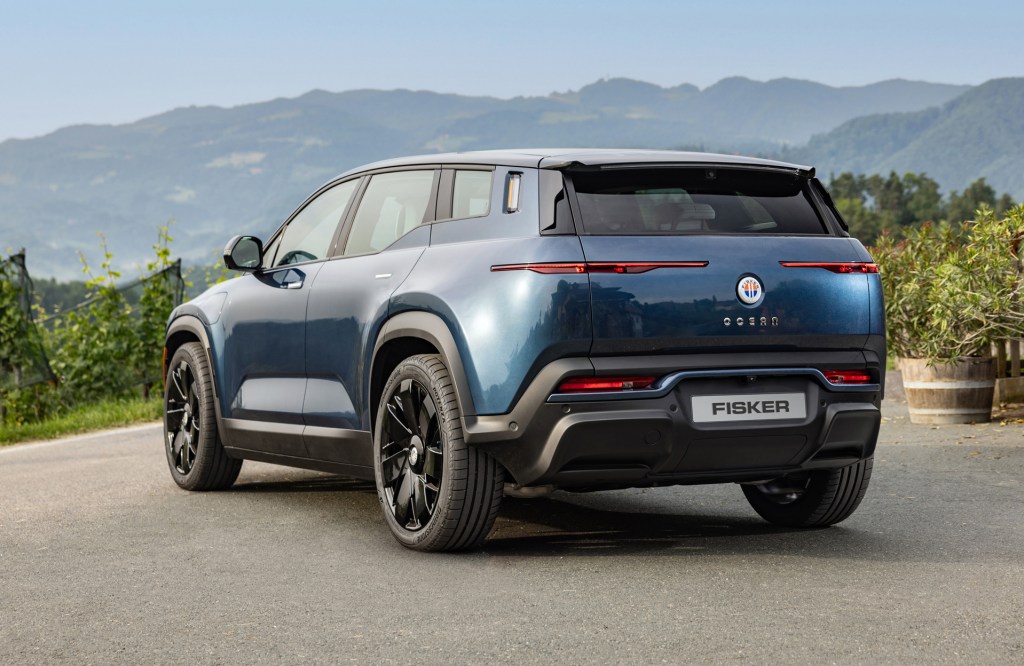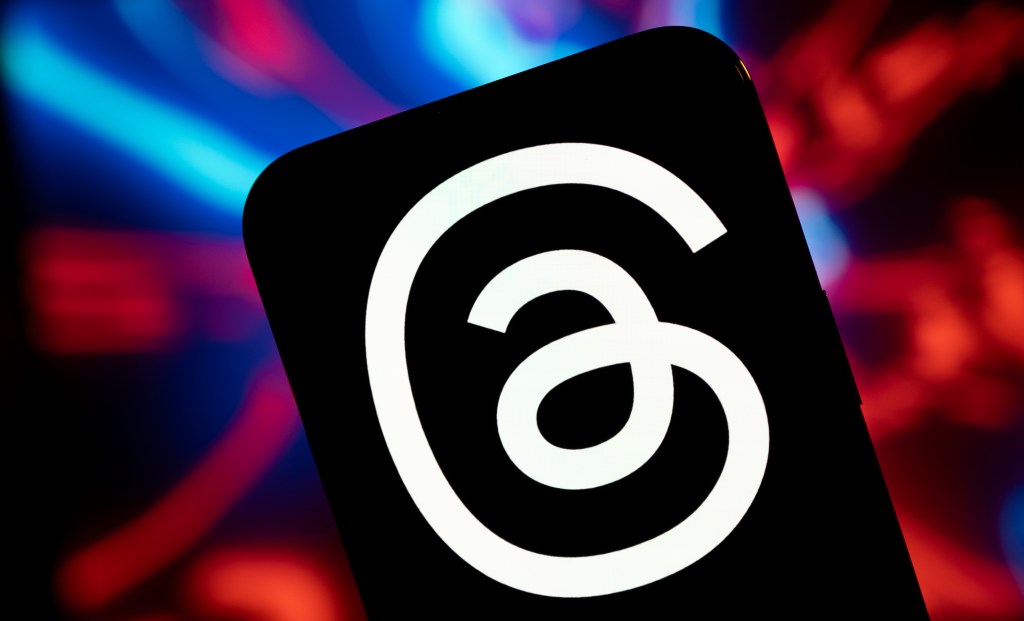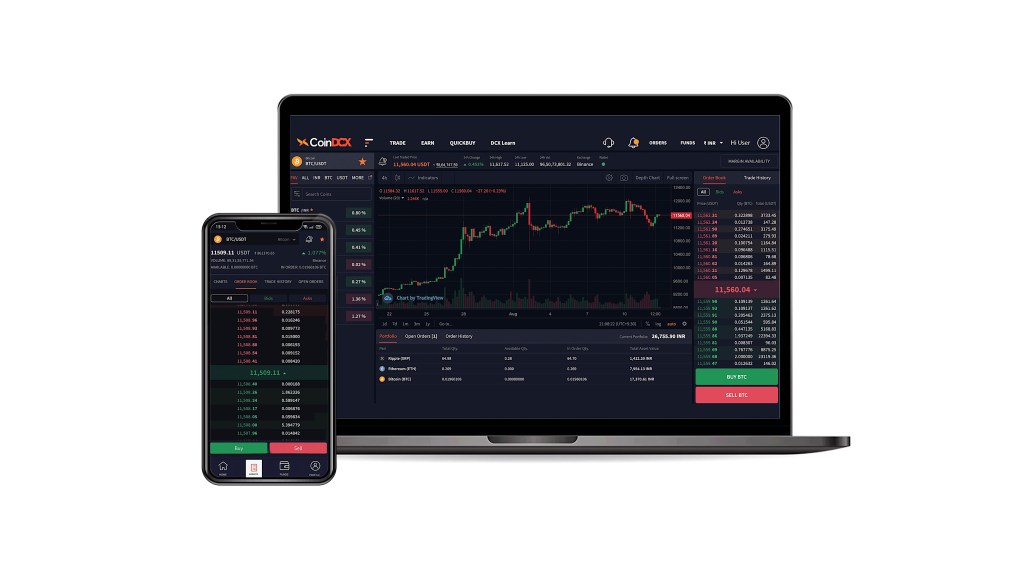The odds are against San Francisco-based electric vehicle battery swapping company Ample. Other companies have tried to build a business on exchanging dead batteries for fresh ones to solve the problem of long EV charge times: Fourteen years ago, Better Place raised nearly a billion dollars to do what Ample’s doing, and it ended up declaring bankruptcy.
But that was more than a decade ago, when EVs weren’t sufficiently advanced —or plentiful — to make the business model work.
That didn’t deter Ample co-founder John de Souza. Born and raised in Ethiopia to a Greek/Ethiopian mother and a Portuguese/Indian father who found ways to send him and his siblings to school despite their poverty, his family relocated to Dubai when the Ethiopian Civil War started in the 1970s. After emigrating, de Souza finished out high school before heading to the United States at 16 to attend university under a full scholarship.
Since then, he has founded multiple companies, including fintech company Smartleaf, internet startup Flash Communications and consumer health platform MedHelp, where his current co-founder, Khaled Hassounah, served as CTO. Both de Souza and Hassounah come from immigrant backgrounds, which de Souza said affords them with that creative entrepreneurial mentality.
Neither co-founder had previous experience in the energy sector, but by 2018, both co-founders saw an opportunity in the EV market. The only problem was that it would be difficult to get people to convert to EVs when the technology, at least from a refueling UX perspective, was much worse than the status quo.
Many investors didn’t last five minutes into an Ample pitch because they could still see the smoldering ruins of Better Place, but de Souza and Hassounah raised upward of $275 million to solve for the limitations of plug-in charging.
Today, Ample has partnered with Sally, an EV rental company that offers ride-hailing, taxi and last-mile deliveries, along with Uber and Eneos, a Japanese petroleum and energy company. The company’s path to market relies on contracts with fleets wherein Ample’s battery chemistry-agnostic modular battery packs can be swapped into and out of any vehicle. Ample already has deployed seven swapping stations in the Bay Area for participating Uber drivers and plans to launch in Europe, starting with Madrid next year. Depending on COVID-19 border restrictions, Ample is also targeting late next year to start building stations in Japan.
We sat down with de Souza to discuss the merits of a B2B go-to-market strategy, how to create a fun and functional company culture and what it takes to go after an idea most people say won’t work.
The following interview, part of an ongoing series with founders who are building transportation companies, has been edited for length and clarity.
You have a track record of founding quite a few companies that span communications, fintech, health tech and now EV battery swapping. A couple of your companies did end up being acquired, so are you planning on sticking it out with Ample? Or are you already thinking about your next startup?
Well, it’s not just me, because I have my co-founder and you need to be in sync about what you’re doing. So firstly, I would recommend to any founder, it’s so much better doing it with somebody else than doing it on your own. And it’s easy to be friends with somebody you’ve worked with, but working with a friend is much harder because you may not be friends for long. But I think as we went into this, we’re not thinking about the exit. You go into it assuming it’s going to be a long journey, then it will be a fun journey.
To create something takes time. You need to go through the process, and as long as you’re creating value, you actually want to see the realization. I feel when you jump into it just to quickly create and sell, it’s not as much fun and it shows in the company culture. People spend so much time at the company that they need to enjoy being there, so if you’re a company where people love Fridays and hate Mondays, then you’re at the wrong company; it’s time to move on.
You don’t seem to have any competition in the EV swapping space. Maybe it’s not such a great idea if no one else is trying to solve the problem in the same way.
My co-founder and I connected on this idea of doing things that are very improbable, but possible. You just need to find a potential path. If everybody says, “Oh yeah, this is gonna happen,” it’s too late for us. We know it’s the right time and it’s possible there’s a path, but most people are saying this will never work. That doesn’t discourage us, because it’s clearly in that sector of low probability, and that’s a sector we’re most comfortable in.
Better Place tried and failed. Why do you think your company will be successful?
We did a lot of research on electric cars before starting this and found electric cars go back a century. One of the reasons people went over from electric to gas was everybody was building specific batteries for each type of car, but gas was possible to use in any car, and that became very convenient. So now with EVs, we’re asking people to go from something very convenient to something that’s exceedingly inconvenient.
When you look at what Better Place did, it was exactly the same where it’s a battery that’s specific to a car. You need to either persuade all the OEMs to standardize on your battery, which will never happen, or you start building a battery per car, which is going back to a broken model. We looked at what Better Place did, we learned from it, and said the only way this would work is if you’ve built a battery that works across different models, that can swap in a few minutes like gas and doesn’t require the OEMs to change what they do.
More Transportation Founders
Plentywaka founder Onyeka Akumah on African startups and global expansion
Battery chemistry company Sila’s founder Gene Berdichevsky on the science of scaling up
Rad Power Bikes founder Mike Radenbaugh on fueling the e-bike revolution
Via’s Tiffany Chu on the importance of govtech for planning mobility ecosystems
Einride founder Robert Falck on his moral obligation to electrify autonomous trucking
Revel’s Frank Reig shares how he built his business and what he’s planning
Arrival’s Denis Sverdlov on the new era of car manufacturing
Refraction AI’s Matthew Johnson-Roberson on finding the middle path to robotic delivery
Veo CEO Candice Xie has a plan for building a sustainable scooter company, and it’s working
Outdoorsy co-founders detail how they expanded the sharing economy to RVs
Kodiak Robotics’ founder says tight focus on autonomous trucks is working
Zūm CEO Ritu Narayan explains why equity and accessibility works for mobility services
What advice would you give to founders trying to revive a business model that had already died?
They say if there’s a fool in the room, and you don’t know who it is, it might be you. If a lot of people are telling you you’re crazy, it’s something to look at. You can’t be stubborn in going through. You really need to take the feedback, revisit it and understand why it is that you think what they’re saying is wrong.
But I think often there are points at which something has been done before and you have to be confident that something really has changed. What is it that has changed that enables it to work now? Tesla was not the first electric car, by far. But they were the first ones to really be a software company with a car. And that different mindset shows up in everything that they went through and gave them another shot at it versus all these other people who have tried before them.
OK, so what about Ample’s unit economics makes this model work?
The economics and operations work very well because you don’t need a large number at a single station to break even. With a small fleet, you’d have it at max 20 cars and it will break even. That’s what makes it so attractive. You don’t need to deploy the stations until you have a customer. With fleet customers, you sign long-term contracts with higher revenue visibility, and then you spend the money to build infrastructure. So it allows you to go through and align your expenses with the revenue you’re about to receive. It also makes it very easy to go through and finance it because you already know that you’re going to get the revenue coming in.
Well, it works now as you’re only working with fleets, but what about when you move onto the private consumer model?
We’d only do the private consumer model once we’ve already built a network of stations. So at that point, it’s very easy to add incremental infrastructure as customers sign on. For us, the sequencing was very important to start off with corporate users to build our infrastructure. Once you have the infrastructure, then you can go to consumers. The hardest thing I’ve learned with consumers is if you invest money upfront on the infrastructure, then you have to hope they come on to it.
Gogoro’s business model is a bit different, but they’ve done well with micromobility battery swapping. What have you learned from them?
It’s easier to get standardization when you provide a service because you can get a lot of vehicles out there, and I think what they do makes a lot of sense, especially if they can get more manufacturers to use their battery. It would make it easier to leverage the network of stations they’re building. I think they have an early-mover advantage into the two-wheel space and potentially into three-wheel space. They’re open to saying to others, “Just use our battery. You don’t need to develop your own.”
You’ve had two rather large funding rounds this year. How much more money do you think you need to scale?
We’ve been fortunate to have very good partners, but there’s also a lot to be said from leveraging other types of financing because we have high visibility. We can look to infrastructure financing, asset financing or even project financing, which allows us to use capital in different ways to get a lot more leverage. As we go through and build, we’ll have the option to choose a certain number of cities and get the full company profitable or raise more money to help with expansion.
How do you think about fundraising in terms of who you take money from?
All our funding has come from people who understand either the new mobility spaces very well, or they understand the energy space. And I think there’s a tremendous amount of value in getting investors that understand what you’re doing. We realized pretty quickly that going to generic VCs didn’t work well. If I had a dollar for every time a VC said, “Well I have a Tesla and I don’t see any problems,” I’d be rich.
A lot of people we pitched to only really felt comfortable if we presented our business on another business’s template. Like, “OK, this is the Uber of X.” Very few investors want to actually take on a risk of new cutting-edge technologies. Most are comfortable with the tried and proven with a little tweak on it. So if your investors don’t really understand the sector, they’re not gonna understand the issues.
What about strategic investors? You’ve partnered with one of your investors, Eneos, in Japan.
We have actually partnered with energy companies like Shell and Repsol in Europe, PTG from Thailand. So for strategic investors, you have to find people that understand your space. But for us, it wasn’t a requirement for investment. Often you can complicate it too much to make funding contingent on some sort of operating deal. And so it made sense to do the financing as financing, which then allowed us to work together and start creating deals that work later.
What are the merits of going the B2B route? What can other startups learn from your go-to-market approach?
Starting with 10 fleets that have 10,000 cars each is a quick way to 100,000 cars, versus 100,000 individuals, which is just a very painful process. So finding leverage very quickly is tremendous.
I think the financial characteristics make it very easy for you to actually get additional financial leverage because when you raise debt financing or other types of financing, the fact that you have revenue visibility, that you have recurring revenue, recurring EBITDA, makes it very attractive to debt. Eventually, when you think about the public markets, it allows them to understand your offering very well. We didn’t want to be in a space where we deploy a lot of infrastructure and then hope somebody uses it. We saw Better Place doing that, spending a tremendous amount of money per city trying to deploy it, and we said we won’t be doing that. Let’s get the customers first and then deploy after that.
How do you think your past business decisions have informed your current strategy?
I feel like every time you do a different startup, there’s just so much you learn, and it definitely makes it easier. A simple example, when it comes to partners or investors, you want to work with people who you like and that are good people. It may sound trite, but it really does matter because if you have a board meeting and you don’t want to see the people there, it’s a mess. There’ll be ups and downs and you need to be able to work with them.
We have very low turnover at our company, and I think that’s because of what we’ve learned in the past. The issue with growing companies, especially in the Valley, is that you have high turnover, and so trying to grow the company while you’re losing is really hard. If you can stem the people leaving you can grow the company very efficiently, and so we realize the way to keep people is not just to pay them to stay, but to create company culture. People end up spending more time here than they do with their families, so they better like what they do.
The hiring process is also extremely important. You want to hire smart people but you want to hire people with low egos, with low volatility. People can blow things out of proportion so quickly about things that aren’t significant. We have a thorough interview process because we want to build the right culture and make it enjoyable.
What’s one way that you’ve been able to create a more relaxed company culture?
Creating artificial deadlines, internal deadlines in a company is horrible for people. It creates so much stress. Khaled and I try to have most of our deadlines end at us and not create a ripple through the company. So saying things like, “We have to get this done by Friday.” You might hit that deadline once, but if it’s something that’s done regularly it really causes burnout. So you need to figure out which deadlines are really important and you cannot miss, and which are internal and therefore flexible. Because if you’re missing internal deadlines, you need to reprioritize. Move the burden over rather than pushing people to the breaking point to meet these deadlines.
It really changes a culture where people are working hard — you trust them and they work harder. Sometimes you might have to pull all-nighters, but you don’t do that all the time because if you do, you’ll start losing people very quickly.
Since we plan to check in with you, tell me where you think Ample will be in a year.
In Europe. A year from now, the goal is to have deployed in at least one major European city and have it up and running.































Comment